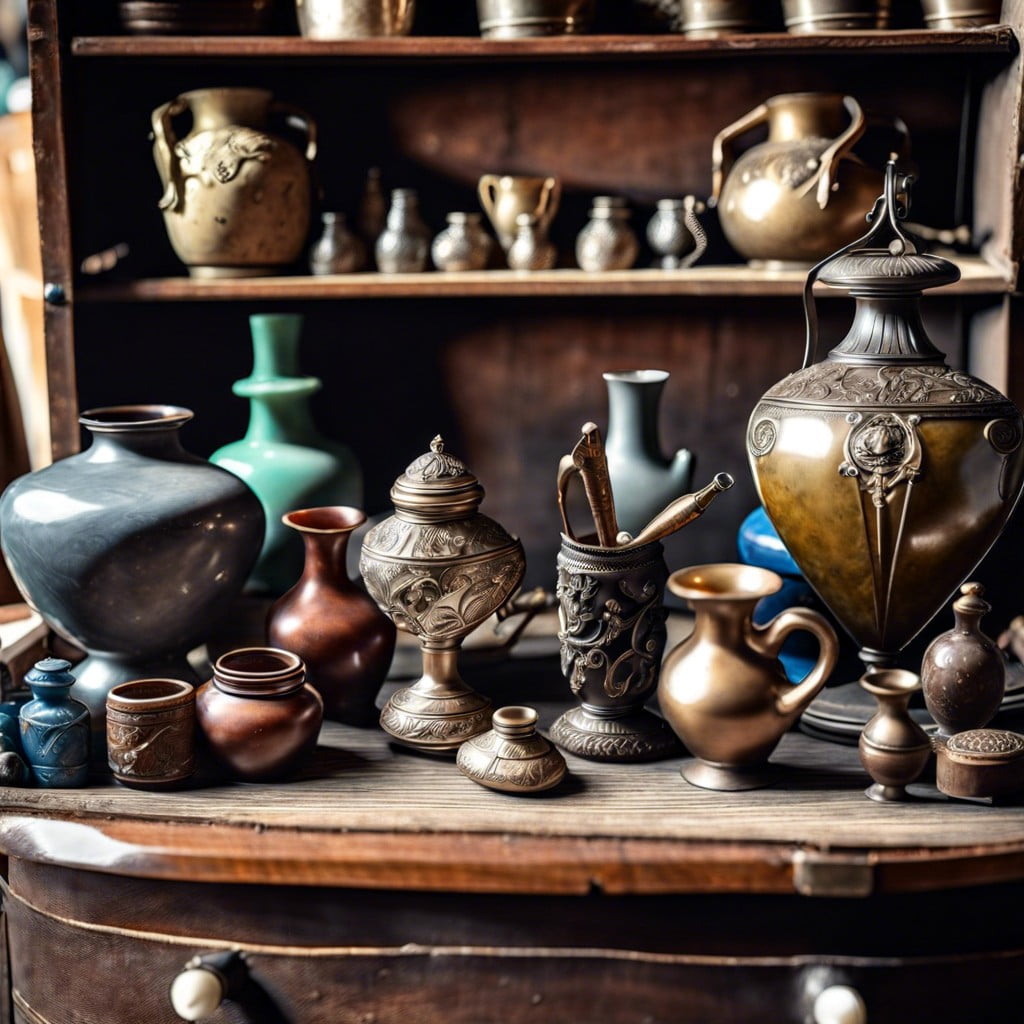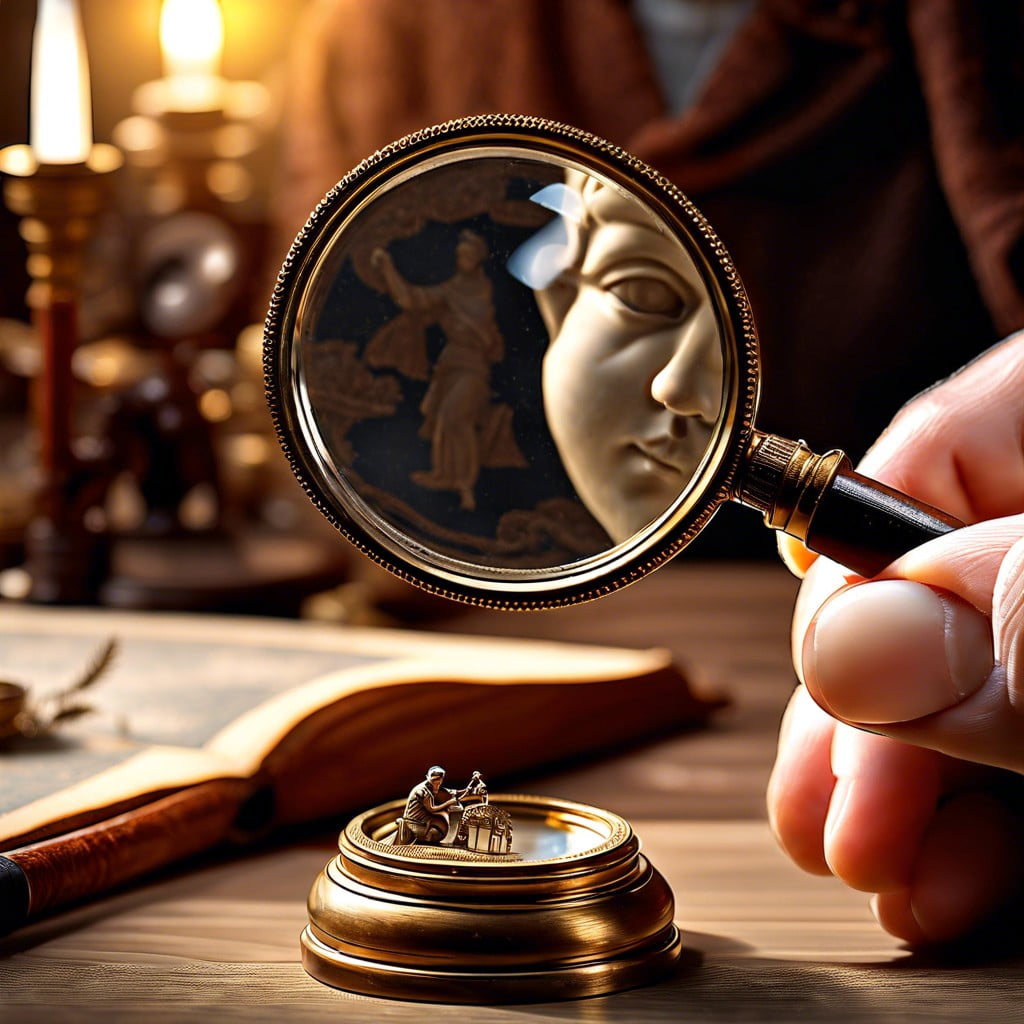Last updated on
Exploring the world of antiques becomes an exciting venture because it offers a fascinating delve into history and can potentially yield lucrative returns.
Key takeaways:
- Rarity, condition, provenance, and market demand affect antique value.
- Thoroughly research before purchasing or selling antiques.
- Authenticate antiques to distinguish fakes from genuine items.
- Negotiate effectively for a fair price in antique transactions.
- Use best practices for selling antiques, including accurate descriptions and good communication.
Understanding Antique Value

Antique value is influenced by several factors, including rarity, condition, provenance, and market demand:
1. Rarity: Items that are scarce or unique typically command higher prices. Limited production runs, one-of-a-kind pieces, and items from defunct manufacturers are examples of rare antiques with increased value.
2. Condition: Antiques in pristine or excellent condition are more valuable than those with damage or significant wear. Original parts, minimal restorations, and well-maintained items retain value better.
3. Provenance: Documentation or a well-documented history of an item can enhance its value. Provenance may include previous ownership by notable figures, original receipts, or historical significance.
4. Market Demand: Trends in the antiques market can heavily influence value. Items popular with collectors will be more valuable, while those that fall out of favor may decrease in price.
Understanding these factors helps in assessing an item’s worth whether you’re adding to a collection or considering a sale.
Researching Antiques Before Purchase

Conducting thorough research prior to purchasing an antique is crucial for making an informed decision. This includes:
- Assessing Historical Significance: Study the time period and origin to understand the piece’s historical context.
- Examining Craftsmanship: Identify markers of quality, such as construction techniques and materials, which often indicate authenticity.
- Consulting Price Guides: Reference current and past price guides to gauge the item’s market value.
- Seeking Expert Opinion: Reach out to appraisers or seasoned collectors for insights, particularly for high-value items.
- Reviewing Provenance: Check for documentation or provenance that can authenticate the item and enhance its value.
- Learning Market Trends: Analyze market fluctuations and demand for similar items to better predict future value.
Authenticating Antiquity and Identifying Fakes
Discerning genuine antiques from reproductions is crucial in ensuring the value of an item. Here are key points to aid in authentication:
- Expert Consultation: Seek a professional opinion. Antique appraisers or experienced dealers often can spot subtle details that indicate an item’s age and authenticity.
- Hallmarks and Maker’s Marks: Inspect for manufacturer’s marks, typically found on the bottom or back of the piece, which can provide information about its origin and age.
- Wear and Patina: Authentic pieces show characteristic wear in places consistent with their use. Uneven patina, or a natural film that develops on metal and wood, also suggests age.
- Construction and Materials: Investigate how the piece is made. Antique furniture, for instance, may show signs of being handmade, like irregular dovetail joints.
- Provenance and Documentation: Authentic pieces often come with a history of ownership, or provenance. Documentation and receipts can corroborate an item’s past.
- Research and Comparisons: Familiarize yourself with styles and characteristics of the period in question. Compare your item to verified antiques in books, museums, or online databases.
Learning to identify fakes requires time, but with these points in mind, buyers can approach transactions with greater confidence and sellers can assure potential customers of their items’ authenticity.
Negotiating a Fair Price
Negotiation is a vital skill when handling transactions involving antiques. A well-informed buyer or seller is in a better position to negotiate effectively. Begin by establishing a baseline; researching recent sales of similar items provides valuable insight into what’s reasonable. Take into account the condition, rarity, and provenance of the item, as these factors greatly influence value.
When engaging in a negotiation, clear communication is crucial. Express your interest in the piece and any concerns you might have. Sellers should be prepared to justify their asking price with facts, while buyers should articulate their offer and how they arrived at it.
Consider the larger context; sellers looking to liquidate quickly may accept a lower offer, while buyers at exclusive auctions may face stiffer competition. Be prepared to compromise; the goal is a price that reflects the antique’s worth while satisfying both parties. Remember, mutual respect and understanding can often lead to successful and fair negotiations.
Best Practices for Selling Antiques
Accurate descriptions are vital. Ensure every listing gives a detailed and truthful account of the item’s condition, age, and provenance. Include high-quality photos from multiple angles to showcase the item’s condition and unique features.
Price the antiques based on current market value, considering factors like rarity, demand, and condition. Research similar items that have recently sold to guide your pricing strategy.
Choose the right platform to reach the intended audience, whether that’s online marketplaces, auctions, or antique fairs. Understand the costs associated with each platform and factor them into your selling price.
Good communication with potential buyers is crucial. Respond promptly to inquiries and be willing to provide additional information or photographs if requested.
Consider professional appraisal for high-value items to ensure credibility with potential buyers and to justify your asking price.
Packaging and shipping require special attention. Antique items often need to be packed with extra care to prevent damage during transport. Clearly communicate shipping costs and methods to buyers beforehand.
Maintain a reputation for honesty and quality. Encourage buyers to leave reviews, and address any issues that arise quickly and fairly to build trust and repeat business.
Stay informed about the evolving market and adapt your approach as necessary. Shifts in trends and demands can affect the value and salability of your items.
Setting Realistic Selling Prices for Antiques
Establishing a realistic selling price for an antique involves a thoughtful assessment of several factors to ensure the price reflects its value accurately. This evaluation process starts with understanding the item’s age, rarity, and provenance. Consult reputable pricing guides, auction results, and similar pieces on the market to gauge current market demand.
Condition plays a pivotal role in value determination – items in pristine condition often command higher prices. However, overrestoration can detract from value, so it’s important to consider preservation versus restoration.
Historical significance can also enhance an antique’s worth. Objects with a well-documented history or previous ownership by notable figures generally attract premium prices.
Lastly, be mindful of market fluctuations. The popularity of certain periods or styles can wax and wane. Regularly review market trends and adjust prices accordingly to align with current buyer interests.
By integrating these considerations, sellers are better positioned to set prices that are fair, competitive, and attractive to potential buyers.
Online Marketplaces for Buying and Selling Antiques
A plethora of online platforms cater to antique enthusiasts. Sites like eBay and Etsy have established sections for antique goods, offering a broad audience and user-friendly selling processes.
Here are some points to keep in mind:
- Photography is Key: High-resolution, clear images showcase the item’s condition, critical for online transactions where tactile inspection isn’t an option.
- Detailed Descriptions: Accurate descriptions provide history, provenance, and condition. Honesty about any damage or restorations is essential to maintain credibility.
- Understand Fees: Be aware of listing fees, final value fees, and payment processing charges. These can affect your profit margin.
- Shipping Considerations: Factor in the cost and logistics of shipping, especially for fragile items. Include proper insurance to protect against loss or damage.
- Presence and Reputation: Building a strong seller profile with positive reviews is crucial. Prompt communication and professional customer service foster trust and repeat business.
- Platform Fit: Some sites attract niche collectors while others target a general audience. Choose the platform that aligns with your items’ category for better sales prospects.
Engaging with online communities dedicated to antiques can also provide insights on pricing and the current demand for certain items.
Legal Considerations in the Antique Trade
Navigating the legal landscape of the antique trade is crucial to ensure compliance and avoid potential pitfalls. Here are essential points to consider:
- Provenance and Due Diligence: Verify the history of an item to prove it’s legal to sell. This can help avoid issues with items that may have been stolen or acquired illegally.
- Cultural Heritage Laws: Be aware of regulations regarding artifacts that may be considered national treasures or protected cultural property. International laws such as the UNESCO 1970 Convention may influence what can be legally bought or sold.
- Import and Export Regulations: When dealing with international transactions, ensure adherence to customs laws and other import/export restrictions to prevent costly penalties and the confiscation of items.
- Tax Implications: Keep abreast of tax obligations associated with buying and selling antiques, including sales tax, use tax, and income tax on profits from sales.
- Intellectual Property Rights: When dealing with reproductions or restorations, respect intellectual property laws to avoid infringing on copyrights, trademarks, or patents.
- Documentation: Maintain thorough records of all transactions, including receipts, appraisals, and correspondence, to substantiate the legitimacy of dealings.
Following these guidelines will help maintain a reputable antique trading practice and protect all parties involved.
Tips for First-Time Antique Sellers
Ensure your antiques are appraised by a reputable expert to establish item value and appeal. High-quality, detailed photographs from various angles exhibit your item’s condition and craftsmanship, which is crucial for online sales.
Craft a clear, concise description that includes the item’s history, condition, maker, and any other pertinent information to build trust and interest. Choose the right platform to reach your target audience; consider specialized antique sites, online auction houses, or local antique markets.
Understand the fees associated with selling on different platforms, as these can affect your profit margin. Prepare for negotiation by setting a slightly higher asking price, giving you wiggle room while remaining open to reasonable offers. Offer secure shipping options for distant buyers, ensuring items are well-packaged to prevent damage and that insurance is available for high-value antiques.
Keep thorough records of all transactions, including communications with buyers, receipts, and shipping information to protect yourself and maintain professionalism.
Analyzing Antique Trends for Future Investment
Staying abreast of market fluctuations is crucial for investing in antiques with confidence.
Follow auction results from esteemed houses, as these often set the precedent for valuing similar items.
Subscribe to antique trade publications and online forums where seasoned collectors discuss emerging trends.
Attend antique shows and fairs to observe firsthand which items are garnering interest and high bids.
Use historical data to identify items that cyclically return to popularity, understanding that certain pieces have enduring appeal.
Network with experienced antiquarians and appraisers who can offer insights into market shifts and valuable investment pieces.
Monitor economic indicators; luxury goods like antiques often follow broader economic trends.
Consider the impact of contemporary interior design trends on the demand for specific styles or periods of antiques.
Be mindful of the global perspective, as international buyers can significantly influence market value for certain categories of antiques.
By analyzing current trends, one can make informed decisions on which antiques may prove to be lucrative investments.
Related:




